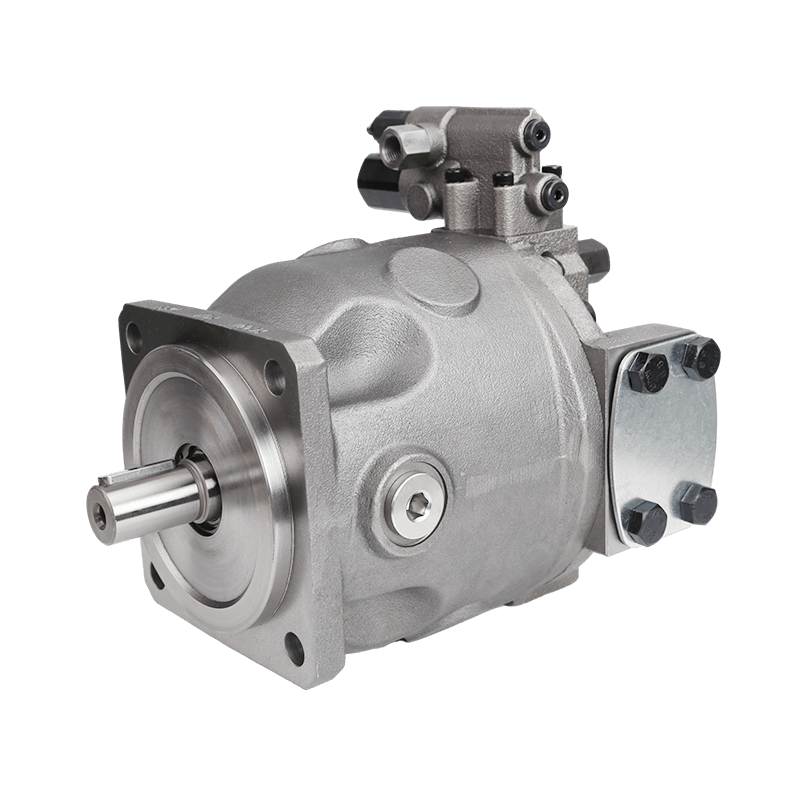Parker piston pumps are highly regarded for their robust design, high efficiency, and capacity to handle demanding hydraulic applications. Like any complex machinery, however, they are not immune to problems that can reduce performance and productivity. Understanding these common problems and their solutions is very important in maintaining smooth operations and extending the lifespan of your Parker piston pump. Let’s delve deep into the very intricate world of Parker piston pumps and reveal some tricks on how to keep this pump running at its finest.
1. The Symphony of Chaos: Vibration and Noise in Parker Piston Pumps
A noisy and/or vibrating pump is usually your first indication of trouble. This noise could emanate from several sources to include:
Misalignment: If the pump shaft and the driving shaft are not aligned to each other, they generate abnormal vibrations and noise.
Wear in the Bearings: Worn-out bearings give a grinding or rattling noise with the vibration of the system.
Loose Components: Loose coupling joints, destroyed elastic cushions, or not well-tightened assembling bolts of the rotating shaft can be another reason for the shaking and noise.
Troubleshooting the Noisy Monster
To quiet this noisy monster and give your hydraulic system some peace of mind, follow these steps:
Check Alignment: The pump shaft must be concentric to the drive shaft and positively coupled.
Bearings Inspection: Look out for wear and tear on the bearings and replace them if necessary.
Tighten the Fasteners: All coupling joints, elastic cushions, and assembly bolts should be tightly fitted.
2. The Pressure Puzzle: Decoding Abnormal Output Pressure
Output pressure is the lifeblood of any hydraulic system, and fluctuations can spell disaster. The output pressure of a Parker piston pump is directly proportional to the load and output torque. Here’s what can go wrong:
Low Pressure: The causes of low output pressure are insufficient pump displacement, slow pump speed, or leakage in the system.
High Pressure: High pressure may be caused by blockages in the system, a faulty relief valve, or excessive load, all of which put undue stress on the pump.
Pressure Taming Techniques
To restore pressure harmony, consider the following:
Check Displacement: The displacement can be checked by moving the variable piston to increase the tilt angle of the tilting plate so that the pump provides an adequate amount of displacement.
Inspect Speed: Check that the speed of the pump is not too low or too high.
Leaks: Internal and external, internal may involve checking components such as relief valves, while external leakage can be due to torn oil seals, loose joints in piping, or a crack in gaskets.
3. The Sneaky Saboteur: Oil Leakage in Parker Piston Pumps
Oil leaks are normally a nuisance, a safety hazard, but importantly a symptom of an issue. The following could be the reasons:
The oil seal is damaged: Normally the culprit is the worn or damaged shaft seal causing an oil leak.
The internal leakage is excessive: Internal leakage causing high pressure at the oil seal can dislodge or damage the seal.
Insufficiently Dimensioned Drain Pipe: A thin or excessively long drain pipe promotes leakages at the seal.
Slack External Piping: The loose connections of the pipe, dislocated seals, or aging gaskets in the external pipe carrying oil are also hazardous.
Sealing the Leaks: A Step-by-Step Guide
To contain the sneaky saboteur, follow these steps:
Shaft Seal Check: Replace the shaft seal in case of any damage or wear.
Internal Leakage: Find internal leakage points and repair them in order not to put pressure on the oil seal.
Drain Pipe Improvement: Let the drain pipe be of suitable size and length.
Tighten External Connections: The external pipe joints need to be tightened, along with the replacement of the damaged seals or gaskets.
4. The Midpoint Mystery: No Zero Oil Displacement
A Parker piston pump should theoretically have zero oil displacement at its midpoint. If it doesn’t, then the overall performance and efficiency may suffer. This can be due to:
Worn or Sticking Internal Parts: Wear and tear or contamination can cause internal pump parts to stick, preventing the pump from reaching zero displacement at midpoint.
Increased Distance Between Internal Parts: As internal parts wear down, the distance between them increases, affecting the pump’s ability to achieve zero displacement.
Restoring Midpoint Balance
To bring back the midpoint harmony, consider these solutions:
Dismantling and Repair: Dismantle the pump to check for burrs or metal particles or other types of contaminants. Repair and replace worn parts according to the technical manual.
Cleaning and Refill: Fully clean the pump and change the hydraulic fluid with adequate type.
5. The Heat Monster: Hydraulic Pump Overheating
Excessive heat is the enemy of any hydraulic system, and piston pumps bear no exception. Overheating can result in degrading oil, seal failures, and even damage to the pump. Common causes include:
Low Fluid Level: Inadequate level of hydraulic fluid forces the pump to work harder and increases its temperature.
Clogged Filter: A suction strainer or filter prevents the flow of fluid, so the pump has to work overheat.
Internal Leakage: Internal leakages in the pump reduce the efficiency as well as generate extra heat.
High Ambient Temperature: Operating the pump in a high-temperature ambient also results in overheating.
Cooling Down the Heat Monster
To tame the heat monster, try these strategies:
Maintain Fluid Level: Regularly check and maintain the hydraulic fluid level in the reservoir.
Clean or Replace Filter: Clean or replace the suction strainer and filter periodically to ensure free flow of fluid.
Eliminate Internal Leakage: Locate and eliminate any internal leakage spots to enhance pump efficiency.
Ventilation and Cooling: Provide adequate ventilation and cooling to the pump, especially in high-temperature environments.
6. The Flow Famine: Inadequate or No Oil Output
A hydraulic system is based on continuous flow or transit of oil to work properly. If, for any reason, this supply of oil by the pump stops, it brings the entire operations to a grinding halt. Following are some of the reasons:
Cavitation: The formation of air bubbles in the hydraulic fluid because of low inlet pressure avoids the effective drawing of oil by the pump.
Air Leaks: Air leakages at the intake, especially around piping joints or the shaft seal, disturb the flow of oil.
Priming Problems: Insufficient priming of the pump due to low drive speed or wrong viscosity of the fluid.
Restoring the Flow: A Practical Guide
To quench the flow famine, consider these measures:
Seal Air Leaks: Tighten intake connections, oil joints in order to detect leakage, and replace shaft seals with appropriate seals according to manufacturer’s instructions.
Prime Properly: Properly check the speed of the drive and fluid viscosity to check if proper priming has occurred. If so, drain the system and refill with correct fluid.
Address Cavitation: Inlet pressure can be increased, restrictions in the suction line can be eliminated, and air can be bled in the system.
7. The Flow Rollercoaster: Fluctuations in Output Flow
In Hydraulic Operations, the smooth process requires consistent output flow. Where there is fluctuation, it leads to jerky motions and hence inconsistency in the performances. Following are the factors affecting fluctuations in the output flow of hydraulic motors:
Foreign Objects: Debris or foreign particles entering the variable mechanism scratch or damage the control piston, which results in an unstable movement and fluctuating flow.
Instability of Control Piston: Insufficient energy provided by the amplifier, destroyed parts, or inefficiency of dampers used to damp the control piston are further causes of instability and pulsation of flow.
Smoothing Out the Flow: Best Practices
To create a stable flow, implement these best practices:
Avoid Contamination: Keep the hydraulic system clean and check regularly to avoid the entry of foreign objects into the variable mechanism.
Keep the Control Piston Functional: The control piston and its assemblies should be maintained properly; any damage or wear and tear should be rectified as soon as possible.
8. The Flow Void: Lack of Pumping Flow
Pumps must operate as soon as possible. Lack of pumping flow is considered a severe problem and therefore requires immediate attention. Causes of this may include the following:
Pump Damage: Worn or dirty pump components, misalignment, or contaminated oil can result in no flow.
Incorrect Rotation: If the pump is rotated in the wrong direction, it will not pump at all.
Leakage: More leakage, especially from the relief valve, can’t develop the pressure to deliver a pump’s flow.
Addressing the Flow Void
To resolve this critical issue, consider the following:
Clean, Repair, or Replace Pump: Perform a good cleaning to the pump, repair the worn-out parts, check alignments.
Verify Rotation: The pump should rotate the right way, according to the arrow on the pump assembly.
Check for Leakage: All the relief valve settings and leakages of the components must be checked. The technical manual shall act as a guidebook for this.
POOCCA: Your Trusted Partner for Parker Piston Pumps
POOCCA is among the global leaders in providing superior hydraulic components. In fact, our comprehensive array of top-notch Parker piston pumps simply has no comparison. We have:
Competitive Pricing: We are able to offer the best value for your investment by selling at factory-direct pricing.
Fast Delivery: Huge inventory, combined with efficient production, ensures faster delivery and thus avoids hindering your operations.
High-Quality Products: All our products are well tested to ensure that only the highest quality products reach you.
Abundant Selection: We carry a wide selection of Parker piston pump models for a variety of applications.
Professional Customization: Our professionals will be able to provide customized solutions to meet your specific requirements.
Exceptional Technical Support: Our knowledgeable professionals are always ready to provide technical assistance and support.
Contact POOCCA today for the right Parker piston pump for your hydraulic system!










